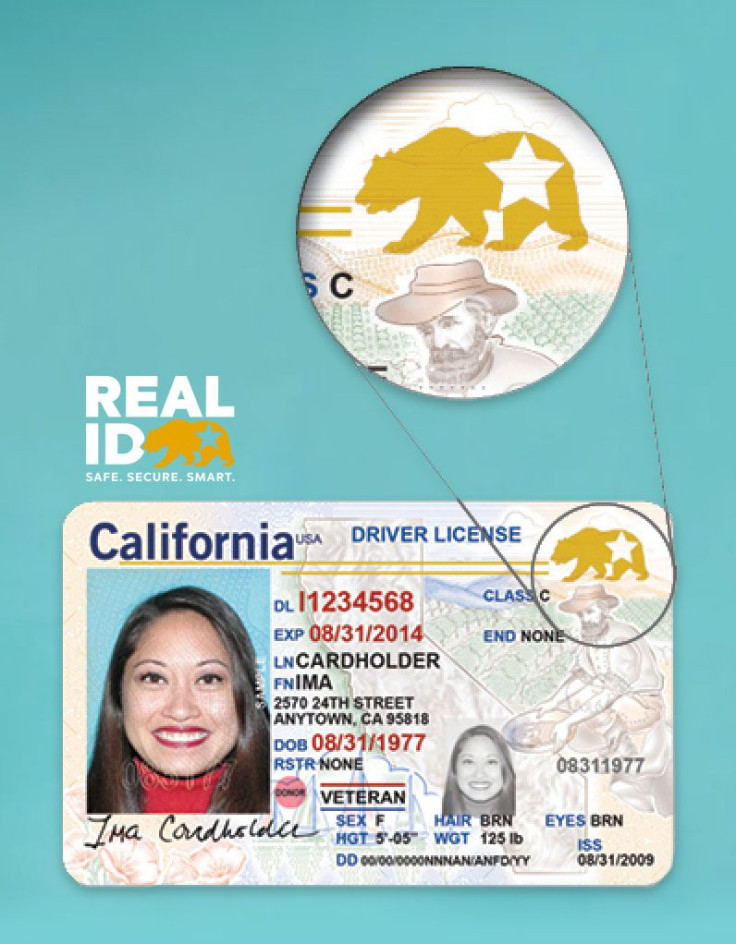You Will Need A REAL ID To Fly Within US Soon. Here's What You Need To Know

KEY POINTS
- REAL ID will be mandatory for traveling within the U.S. starting Oct. 1, 2020
- Travelers can get their ID such as license or passport made REAL ID-compliant
- Around 8.5 million people till now have applied for the REAL ID
- Nearly 3.5 million have been granted the verification
Starting Oct. 1, every air traveler in the U.S. will need a REAL ID-compliant identification document, such as a passport or driver's license, to travel within the country. The system has been put in place as an enhanced security measure by the Department of Homeland Security.
REAL ID is a verification system created on the basis of the 9/11 commission’s recommendations after it was found that the hijackers were able to board planes using fraudulently purchased driver’s licenses. The legislation was passed in 2005. Its implementation across the U.S. was delayed by many states citing costs of compliance and privacy concerns, but with the coming of the Trump Administration, the process has been revived and will be enforced from October.
If someone can't present a REAL ID-compliant identification document after Oct. 1, they won’t be able to pass through a security checkpoint at the airport.
REAL ID does not require you to get a new ID made. In fact, what it does is to add an identification mark -- a star -- to your existing ID. You can get your existing driver’s license made REAL ID-compliant from your state’s Department of Motor Vehicles (DMV). You will need to go in person and present documentation to verify “who you are” according to the TSA website. Everyone is required to present four documents – a passport or a birth certificate, a Social Security card, a tax return, and two documents to establish proof of residency – a mortgage or rental receipt and a utility bill.
Different states are currently following different procedures for enforcing the system. Michigan, Vermont, Minnesota and New York issue both state-issued driving licenses and REAL ID-compliant ones, while Washington State only issues REAL ID-compliant ones. That said, all states have agreed with REAL ID in principle, with Orlando and Oklahoma asking for an extension for compliance while New Jersey has put it under review.
The REAL ID requirement will apply to not just U.S. citizens but to anyone traveling within the U.S., including foreign travelers, who will have to get their travel documents REAL ID certified. It will not be issued to minors, and for interim documents such as a temporary driver’s license.
REAL ID has stoked fears that it could lead to a divide in the country and a basis for discrimination. According to Zochalo commentator Joe Mathews, REAL ID documents may become national ID documents, which could be used for job applications, renting, making hotel reservations, making credit card payments or even voting.
There is currently no protocol in place for the process. Getting it done through DMVs and passport offices is a time-consuming process and burdens the already short-staffed offices in many states.
Many naturalized U.S. citizens, such as Martin Horvat, who came to the country as a 12-year old and even served in the U.S. army have been denied a REAL ID, despite applying. The danger for discrimination is high, especially amid the backdrop of contentious orders such as the Muslim Ban passed by the Trump Administration. The fear is that REAL ID could help the government track its citizens more widely than it already does through the NSA. Another fear is that such a national database may be hacked and used to make fraudulent IDs.
It is also expected to be a logistical, security and privacy nightmare. The Airports Council International-North America (ACI-NA) has warned that it is a “crisis waiting to happen” and could leave thousands of passengers stranded at airports if the October deadline is not extended.
Many lawmakers have appealed to the Department of Homeland Security to extend the deadline.
California Assembly members Jim Frazier (D-Fairfield) and Vince Fong (R-Bakersfield), who is also the Chair and Vice-Chair of the Assembly Transportation Committee, have introduced the AJR 28 resolution asking the DHS to delay implementation by at least three years.
“Over 7 million Californians have a REAL ID and the Department of Motor Vehicles estimates that 16 million Californians will need one by Oct. 1 of this year. That means more than twice as many people need to come into a DMV field office between now and October, than in the entire previous two years combined,” Frazier told East County Today on Wednesday.
The only hope for any delay or change in implementation now lays with the REAL ID Relief Act, 2020, introduced in the House of Representatives. It calls for the DMVs to be given permission for setting up procedures for submitting documents and facial images for REAL ID verification. It will also allow the TSA to accept PreCheck enrollment as an alternative to REAL ID-compliant documentation until April 1, 2022.
© Copyright IBTimes 2024. All rights reserved.





















